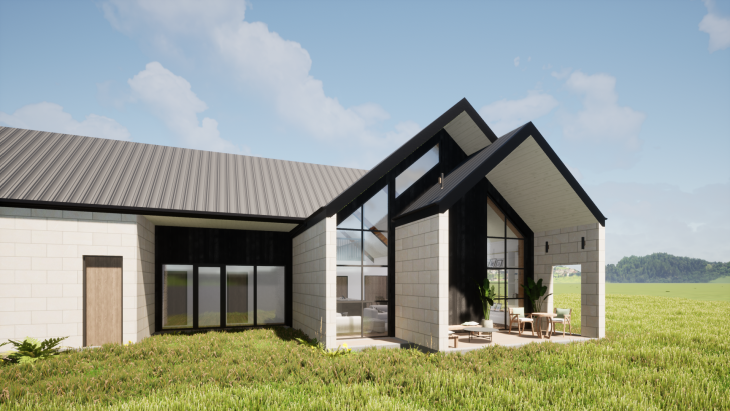Are you using an "Askitect"?

In today's world, finding an architect or designer who takes the time to comprehend your unique situation and creates solutions that genuinely improve your quality of life through intelligent design is essential.
Are you tired of architects who don't listen to your needs and create designs that don't fit your lifestyle or budget? Meet the Askitect - the best type of architect you could hope for when building or renovating your home.
The Askitect is a new term that we've coined to describe architects who ask great questions. An Askitect not only possesses technical expertise but also has exceptional listening skills. They understand that their clients' needs and preferences are unique, and they prioritize asking questions over lengthy explanations to uncover the best solutions for their client. Askitects don't sit there distributing their years of wisdom; they start with great questions, and only when they have fully understood their situation do they begin to propose solutions.
Choosing an Askitect is critical when planning a new home because they take the time to truly understand your vision and goals for your living space. They'll ask about your family's lifestyle, your aesthetic preferences, and any concerns you might have about the project. With this information, they'll be able to create a custom design that meets your needs and exceeds your expectations.
In contrast, a traditional architect who doesn't listen to your needs is like a chef who doesn't ask about your dietary preferences before cooking your meal. They might create something beautiful, but it won't be something that you actually want or need. The result is often a design that is over budget, poorly suited to your lifestyle, or both.
In addition to understanding your design preferences and lifestyle, an Askitect also prioritizes understanding your requirements for energy efficiency and healthy homes. They'll ask about your goals for sustainability, air quality, and indoor comfort to ensure that the design they create meets these objectives.
As energy costs continue to rise and concerns about climate change grow, it's becoming increasingly important to prioritize energy-efficient homes. An Askitect will be knowledgeable about the latest technology and design strategies for achieving high levels of energy efficiency. For example, they may recommend using Formance SIPs (Structurally Insulated Panels) for the walls and roof of your home. These panels are designed to provide superior insulation and airtightness, which helps to reduce heat loss and improve indoor comfort.
In addition to using high-performance building materials, an Askitect will also prioritize designing a well-ventilated and healthy home. They may recommend a balanced mechanical heat recovery ventilation system, which is designed to circulate fresh air throughout the home while also recovering heat from outgoing air. This type of system helps to reduce indoor pollutants, control humidity levels, and maintain comfortable indoor temperatures.

Another key aspect of designing a sustainable and healthy home is incorporating passive solar design strategies. An Askitect will be knowledgeable about the orientation of your home, the placement of windows and doors, and the use of shading devices to maximize natural light and minimize heat gain during the summer months.
In conclusion, choosing an Askitect when building or renovating your home is essential if you want a custom design that truly meets your needs and exceeds your expectations. They'll take the time to understand your design preferences, lifestyle, and sustainability goals to create a home that is not only beautiful but also energy-efficient and healthy. With their expertise in the latest building materials and technology, such as Formance SIPs and balanced mechanical heat recovery ventilation systems, as well as their knowledge of passive solar design strategies, an Askitect will help you create a home that is a joy to live in for years to come.
So, don't settle for an architect who doesn't listen - choose an Askitect and get the home of your dreams.
Needing help?
Here are three things to look for when trying to determine whether a designer is an "Askitect" or not:
- Communication skills: Askitects prioritize communication with their clients to ensure they fully understand the client's needs, preferences, and constraints. They should ask insightful questions, actively listen, and respond with thoughtful ideas and solutions. Look for a designer who is an excellent communicator and takes the time to understand your goals and vision for your project.
- Sustainable design experience: Askitects prioritize sustainability and energy efficiency in their designs. They should have experience with sustainable design practices and be knowledgeable about the latest materials and technologies that can help reduce a building's environmental impact. Look for a designer who has experience with passive solar design, efficient HVAC systems, insulation, and other energy-saving features.
- Client-centered approach: Askitects prioritize the needs and preferences of their clients above all else. They should be flexible and adaptable, willing to incorporate your ideas and feedback into their design process. Look for a designer who is willing to collaborate with you and make adjustments to their design based on your feedback.
By looking for these three key qualities, you can better identify designers who are likely to be Askitects and provide you with a successful, personalized design experience.
Supporting References:
Here are some references that support the ideas discussed in this article:
- "Structural Insulated Panels (SIPs)." U.S. Department of Energy.
- "Balanced Ventilation." Building Performance Institute.
- "Passive Solar Design." U.S. Department of Energy.
Additionally, there are numerous studies and articles that discuss the importance of communication and client-centered design in architecture. Here are a few examples:
- Buswell, R. A., & Hadikusumo, B. H. W. (2005). The role of communication in architecture. Building Research & Information, 33(4), 319-327.
- Jones, R. (2019). Client-centered design in architecture. ArchitectureAU.
- McDonough, W., & Braungart, M. (2002). Cradle to cradle: remaking the way we make things. North Point Press.
These resources support the importance of prioritizing communication and understanding clients' needs in architecture, as well as the value of sustainable and energy-efficient design strategies.
Here are some additional references related to the technology mentioned in the article:
- "SIPs - What are they and why should I use them?" Formance.
- "Balanced Ventilation System with Heat Recovery." Stiebel Eltron.
These resources provide information on the specific technologies that can be used to create energy-efficient and healthy homes, including SIPs, passive solar design, and balanced mechanical heat recovery ventilation systems. They also provide examples of companies like Formance and Stiebel-Eltron that offer these technologies and related products.






